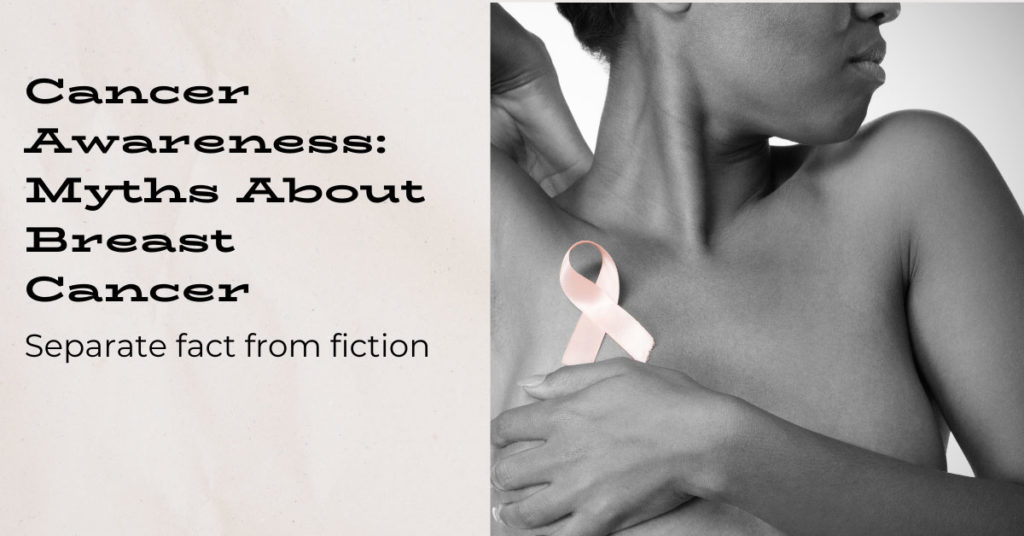It’s so important to avoid misinformation when it comes to your health, particularly with something as serious as cancer. When you or someone close to you is diagnosed with cancer, myths can circulate pretty easily.
While doctors can readily clear everything up for you, not everyone is totally educated on the ins and outs of prevention or treatment. Here, we’ll discuss what the current research says about breast cancer:
Myth: A family history means you’ll develop it too
Technically, you’re in a higher risk group if there is a family history of breast cancer, but there isn’t really a strong correlation. Only about 10% of women who are diagnosed have a close family member who had breast cancer.
The National Breast Cancer Foundation, Inc. suggests that if someone in your immediate family was diagnosed, you should begin mammograms regularly about 10 years before the age they were diagnosed.
Myth: Your deodorant can contribute to breast cancer risk
Some researchers have suggested that aluminum-based deodorants have an estrogen-like effect on the body, but no study has been able to prove that it causes breast cancer.
Other ingredients, such as parabens (a type of preservative) found in cosmetics can also be found in breast cancer tumors, yet nothing has been able to prove that they contribute to cancer risk. Most deodorants in the U.S. do not contain this ingredient, anyway.
Myth: Finding a lump in your breast means it’s cancer
We always advocate for routinely checking for any unusual changes in your breast. Though, only a small fraction of lumps turn out to be cancer. It can very well be any of the following:
- Fibrocystic breast changes. These are “normal” lumps found in breast tissue that can get tender around the time of your period
- Fibroadenomas. These are also harmless and are able to move around under the skin.
- Breast cysts. Sometimes, milk ducts become full of fluid and change depending on where you’re at in your cycle. Once again, not a serious threat to your health.
We advise going to the doctor for imaging tests if it’s something totally new or if the lump persists. Here is where you’ll find out how to do a self breast exam; these can be a great first step, but remember that regular mammograms are way more accurate.
Myth: Having smaller breasts means lower risk
The research here is a bit fuzzy. Larger breasts often mean more body fat, which means more estrogen in the body and an increased risk of cancer. Though, many women with lower body fat have dense breasts,
More dense breasts have less fat and more fibrous and glandular tissue-sometimes making it hard for mammogram imaging to pick up small tumors. In this case, a doctor might order an MRI or an ultrasound for a more accurate picture of your breasts. You can learn all about the risks of high breast density here.
Myth: Wearing underwire bras can raise your risk
There simply isn’t any research to suggest that underwire bras cause or contribute to your risk of developing cancer. This idea began when with the book Dressed to Kill by Sydney Ross Singer and Soma Grismaijer; it stated that the underwire itself blocked lymphatic fluid and “toxins” build up. There is no valid evidence to explain what these “toxins” are.
Most likely, women who wear underwire bras likely have larger breasts, which is a risk factor due to higher amounts of estrogen. It doesn’t mean the bras themselves are causing cancer.
Knowing the false ideas concerning breast cancer is almost as important as being educated on the facts. Luckily, today we have some of the best tools to better understand prevention and early detection.
